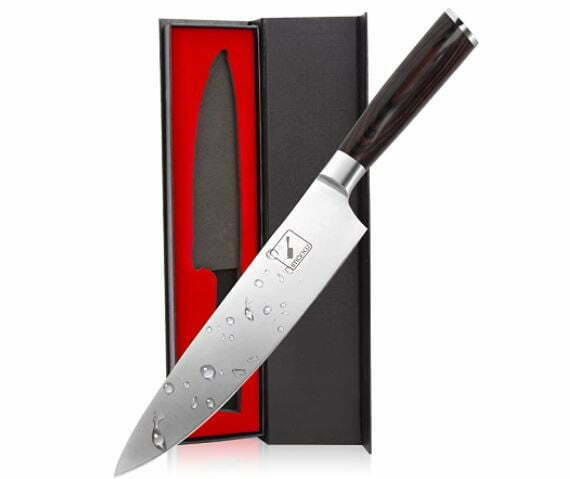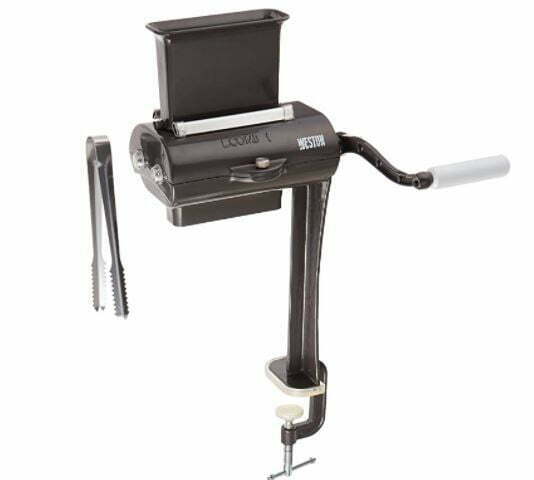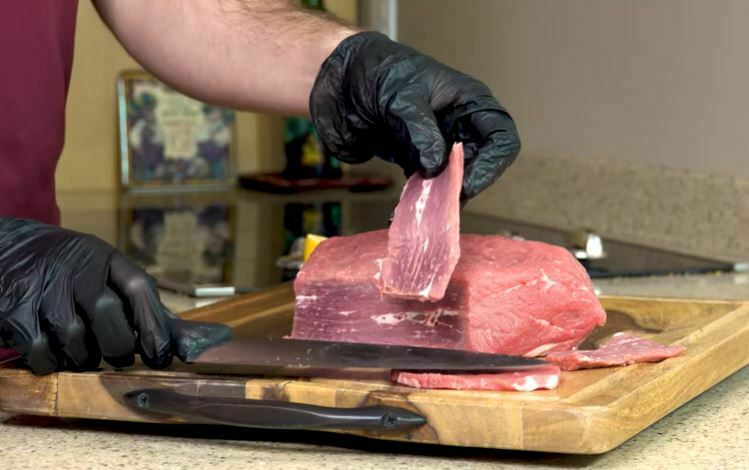Are you a jerky lover and wish to make it on your own instead of the store-bought version? Then you may want to learn about how to cut meat for jerky. That is the reason why today we’ll be telling you all about how to cut chicken breast into strips the right way.
When handling meat for jerky, you certainly do not want to end up with too thin of a jerky piece that becomes very tough or too much of a thick piece that will be chewy. If you’ve tried in the past to cut meat for jerky and you didn’t like the result, you know that there is a right and a wrong way to achieve the perfect jerky strip.
Attempting to cut meat for jerky may sound intimidating, but in reality, you have nothing to worry about. Once you have the right tools and follow simple guidelines, you’ll feel like a pro. Continue reading and take your meat cutting skills to the next level as we share with you how to cut meat for jerky.
How to Cut Meat for Jerky FAQs
What type of meat cut do you need for jerky?
Beef is the number one choice for most home jerky makers. The sirloin tip and any part of the round, including the round’s top, bottom, and eye, make excellent jerky. To get the best deal on these cuts, purchase them in “roast” form when they’re on sale. Other cuts of beef that make good jerky are the flank and brisket, which are generally more expensive. Use the same lean cuts when you’re processing venison jerky.
How thick should you cut meat for jerky?
To make delicious jerky, the jerky meat needs to be the same thickness throughout the beef; one-fourth of an inch thick is standard. It is impossible to cut the top round by hand consistently at one-fourth of an inch.
How thin should you cut meat for jerky?
Hold the knife’s blade over the meat so that you’re trimming a thin, vertical strip. Lower the knife and slide the blade back and forth to cut the strip. Keep the thickness of the strip between 1⁄4–1⁄2 in (0.64–1.27 cm). Thicker cuts will take slightly longer to cook than thinner cuts.
What happens if you cut jerky too thick?
When you’re slicing meat for jerky, you’re walking a very fine line. If it is too thick, it will be chewy, and it will become very tough if it is too thin.
Do you cut against the grain for beef jerky?
Jerky is always cut against the grain, just like any well-prepared steak.
What is the difference between cutting meat for jerky, with grains, or against grains?
If you slice your meat with grains, it means that the blades of your knife will follow the natural lines of your meat. So when eating the final product, you will have to chew through the fibers. That makes your jerky chewy/tough. If you were to cut against the grains, the blade is supposed to intersect the natural lines of your meat. You can easily chew your jerky since the hard work is over. So when slicing meat for jerky, always slice against the grains.
How do you know if you’re cutting meat against the grain?
If you’re unsure which way the grain lays, cut a thin slice of the meat from the piece you’ve chosen for jerky. Grasp opposite ends of the meat slice and attempt to pull it apart. If it separates easily, you are likely cutting “across the grain.” If it stretches and doesn’t pull apart easily, your cut is likely with the grain, which is exactly what you want.
Does a butcher slice meat for jerky?
You can have your butcher pre-slice the beef for you. This will save you a step in the jerky-making process. Your butcher can slice the beef into uniform slices with a commercial slicer to your exact specs. This will ensure that the jerky cooks evenly in your oven, a very important part of jerky making at home.
How long should you marinate beef jerky?
Place the whole bag into the fridge to thoroughly marinate for up to 24 hours, but no fewer than 4 hours. The longer you marinate, the deeper your flavor and tenderizing action.
How long should I smoke jerky?
Smoke for 3-5 hours until finished. Beef jerky will finish a lot faster in a pellet smoker than in an electric smoker. Start checking around the 3-hour mark.
How to Cut Meat for Jerky
Method 1: Sharp Knife
- Place the meat in your freezer for up to 2 to 3 hours, or remove it from the freezer until the meat is slightly frozen. The water in the beef crystallizes when you freeze it leaves the meat more firm. That makes it easy to cut the meat.
- Turn the meat so that the grain is parallel or perpendicular to the knife. If you’re cutting against the grain, the grooves in the meat fibers should be running to the left and right. If you’re cutting with the grain, turn the meat so that the grain is resting vertically in front of you.
- Slice the slightly frozen meat into 1/4″ to 3/8″ thick slabs using your sharp knife. Don’t cut toward yourself. Protective gloves are advised.
- Hold your blade parallel to your first cut. Move the blade back and forth while driving the knife into your cutting board until the second strip is complete. Continue cutting the meat this way to keep each piece parallel.
- Once you’ve cut the entire piece of meat into thin, evenly-sized strips, you’re ready to begin marinating and drying the meat. Or you could refrigerate or freeze until you’re ready to make jerky.
imarku Chef Knife – Pro Kitchen Knife 8 Inch
High-carbon stainless steel blade-It is manufactured from high-quality stainless steel that maintains its functionality for a long time.
The gyutou knife is classified and designed to be a multipurpose knife for professional applications. It cuts, dices, slices, chops, and also cuts meat off bones.
Sharpness is key to achieving the best cuts, and this is evident in the knife’s blade, which is quite sharp and will remain this way even after challenging tasks such as cutting tough meat or removing flesh from bones.

Features:
- 8 Inches
- High-carbon stainless steel blade
- A multi-functional knife is also amazing when learning how to cut a lobster tail.
Method 2: Meat Slicer
- Cut the roast in 1 ¼” slabs and feed it through the machine. A couple of turns of the handle provides the piece of meat through, and it slices it with ease.
- Just feed the slabs through the slicer either with the grain or against the grain to achieve your favorite chew.
Weston Manual Single-Support Jerky Slicer
Turn your favorite cuts of meat into perfect jerky strips using our Manual Jerky Slicer. Prepare jerky meat for drying in an oven, dehydrating, or smoking.
The 32 stainless steel blades cut up to 15 slices that are 3/8″ thick. Easily feed your meat into the 4.5″ x 1.25″ opening and turn the handle.
You can also cut meats for fajitas, steak strips, or other family favorite recipes. Stainless steel tongs are included for safe and easy handling of the meat.

Features:
- 32 stainless steel blades
- Accepts bulk meat up to 5 inches wide
- Stainless steel combs prevent the meat from jamming
How to Cut Meat for Jerky Additional Tips
- Keep your knife sharp. If your knife is dull, you won’t have much luck getting those nice, thin jerky slices. You’ll wind up with thicker cuts that don’t marinate thoroughly or dry evenly.
- Fat is the mortal enemy of good beef jerky. That’s why seasoned jerky makers will always emphasize the importance of removing all fat from your beef.
- When your beef is free of extra fat, stick it in the freezer for an hour or two. You don’t want to leave it in there so long that it truly freezes; just long enough that it becomes more solid and has less give under pressure.
- Slice your beef against the grain. In the meat world, “grain” refers to the direction that the muscle fibers run in, and paying attention to it can make or break your batch of jerky. If you slice against the grain, your knife will hard work breaking the muscle fibers. Your jerky will be softer and easier to chew.
- If you make a lot of jerkies, or if you’d like thinner slices than you’re capable of cutting by hand, a jerky slicer may be a worthwhile investment for you.
- Unlike the meat slicer, you will have to guess the right thickness when using the knife. The chances of errors are high.
- Before using a meat slicer, always ensure that the meat is boneless. Bones can tear up the slicer. If your meat has an uneven texture, you can freeze it partially.



